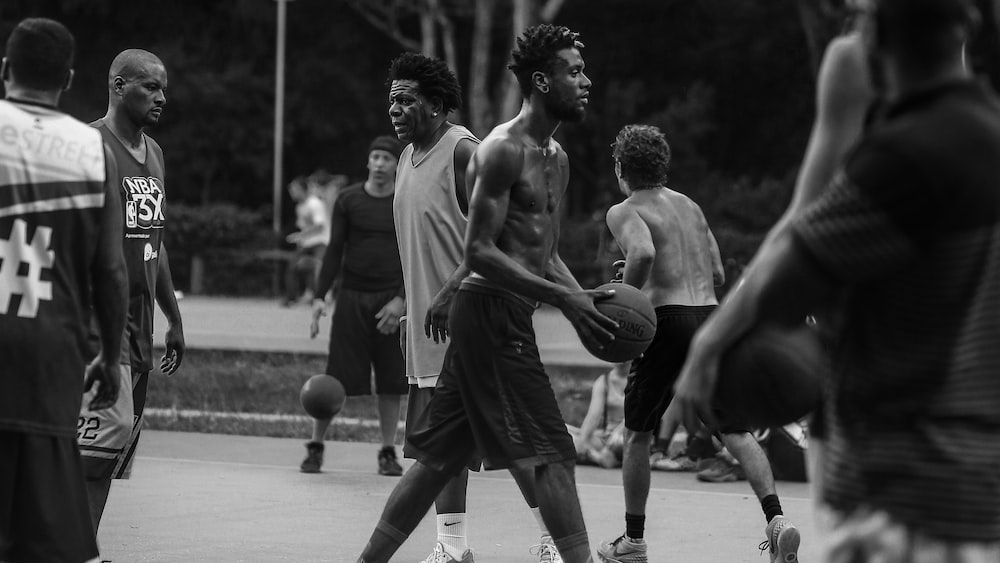
Let’s face it: being a student can sometimes feel like you’re a tiny boat whirling around in a vast ocean of information, trying to grapple with the waves of this lecture or avoid crashing against the rocks of that assignment. Oh, the tumultuous waters of academia! (Kindly laugh here.) But what if I told you there’s one tool, one magical compass that could help navigate these stormy seas? Enter active listening. Active listening isn’t merely the act of hearing; it’s like flexing your brain’s muscle to really comprehend what’s being communicated. This skill is considered a mighty guardian in the realm of effective communication and is often the lifeline that transforms the whirlwind of classroom chaos into a journey of meaningful learning. It’s high time to rally the troops of understanding, strap on our helmets of focus, (drama queen, remember?) and set off on the grand adventure of active listening activities for students. Chances are you’re now at the edge of your seat, your mind filled with vibrant scenes of enlightenment, ready to unlock the mystery behind this game-changing skill. Well, let’s quit dawdling and dive right into the heart of our saga!
Think of the average classroom scenario: our brave little warriors (a.k.a students) mired in a swirl of facts, figures and conjectures, battling against forces like distraction, fatigue and, let’s not forget, the irresistible allure of daydreaming. Amidst this chaos, there’s one skill – active listening – that acts as a silver bullet, slicing through attention barriers like a hot knife through butter.

So, what exactly is this commando of communication, our wizard of wisdom? Active listening is not just an idle pastime where our eardrums play around with sound waves. No, siree! It’s an interactive process, almost like a symphonic performance, a cerebral tango where the listener engages, comprehends, responds, and then retains the information being shared. Remember that afternoon when you sat in your history class, and Mrs. Robertson poured out facts about the French Revolution, and all you did was nod along while daydreaming about that delicious-looking sandwich in your lunch box? Well, that’s NOT active listening. Active listening would be if you asked Mrs. R about Robespierre’s motives or pondered if the revolution could’ve had a different end. Efficiently done, active listening can transform a monotonous monologue into a dynamic discourse. It’s about enhancing connections, fostering understanding, and promoting retention; it’s about engaging in thoughtful interaction rather than just being present.
Active listening is an interactive process that engages, comprehends, responds, and retains information being shared, transforming a monotonous monologue into a dynamic discourse.
The virtues of active listening are numerous, each flaunting its own stylish cape like superheroes on a mission. A study by Wolvin (2010) revealed that active listeners are better able to understand and recall class content, resulting in improved academic achievement. Moreover, equipped with this magical tool, students learn to empathize with different perspectives, fostering interpersonal relationships. With the knights of understanding and empathy by their side, the students develop their emotional intelligence, and effectively shape their communication skills. Bottom line, active listening works wonders in illuminating the path towards critical thinking and effective interpersonal communication, making it an indispensable skill in the academic arena.
Now it’s time to roll up our sleeves and dive into the actual part where we teach this prized skill. Here are 17 engaging, effective, and most importantly, fun active listening activities for students that will usher them into the realms of enhanced understanding and communication.
Equal parts fun and educational, the ‘Draw This’ game is straightforward in its approach but effective in its output. In this activity, one student explains a scene, a shape, or an object, depending on the lesson in question, while fellow students sketch what they interpret from the instructions. The catch? The students don’t see what the describer is seeing. The accuracy of their drawings hence reflects on their listening prowess. Imagine observing a Picasso painting being described? Your students’ artwork might be more like cubist potato chips than the uncanny realism of Guernica, but remember to find the humor in it!
Learning takes an exciting turn as you incorporate audio stories into your daily lessons. Have your students listen to an audiobook or podcast related to the topic of the day. Then, have them discuss or write about the plot, the characters, the themes, or any inspiring dialogue that they might have heard. A tale about Helen Keller, for example, could segue into a discussion about resilience and determination. What did the children think about this human spirit that wouldn’t bend under difficulties? This activity addresses both their active listening skill and their analytical ability to derive conclusions and form opinions about the narrative.
Introducing a bit of competitive spirit into the classroom can enhance students’ engagement and learning. In the ‘Don’t Speak Twice’ challenge, the teacher delivers a set of instructions orally to a group of students, who then carry out the instructions. The challenge is, the instructions won’t be repeated. Whether it’s a complicated art project or a brain-teasing puzzle, the students will have no choice but to listen attentively to every word. They might fumble and trip in their attempts –picture kids pretending to be abstract statues when you meant for them to draw abstract shapes– but that could be a learning moment about the importance of listening diligently. Hold back your laughter though, we wouldn’t want to crush their confidence under the tsunami of your giggles.
We’ve all played a version of ‘Simon Says’ at some point, this beloved childhood game that traditionally bills itself as a listening game. The twist here is, Simon’s directions now pertain to classroom material. For instance, “Simon says, jump twice if a right angle equals 90 degrees”, or “Simon says, turn around once if Madrid is the capital of Spain.” Not only does the novelty of standing and moving around increase the students’ enthusiasm, but the inclusion of lesson-related content forces them to listen attentively to each command. Simon might be laughing in the shadows as students hop, skip, and flip over confusing facts, but hey, didn’t we want learning to be fun?
Engage students in a fun and interactive learning experience by incorporating educational content into a game of ‘Simon Says’.

The classic ‘Telephone’ game has something to teach about active listening, no matter how old school it might sound. The gist is simple: the teacher whispers a message to the first student, it’s passed down the line, and the last student then says the message out loud. Here’s where we face the hilarity of communication gone utterly wrong! But beneath all the laughter and groans lies a valuable lesson. It’s not just about hearing the words; it’s about understanding the meaning behind them. Isn’t it wacky that ‘pineapples have spikes’ somehow becomes ‘eye patches for mice’?
This storytelling activity turns into a riot of laughter as the ‘coming up next’ suspense builds up with every passing moment. In ‘Popcorn Storytelling’, students come up with a story based on a given situation or theme. Each student contributes a few lines to the story before ‘passing the popcorn’ i.e. the chance to speak – to the next student. Picture this: an alien rushing to win a raffle on earth, but pau! – Here comes Grace and turns the alien into an anteater who’s attempting to outrun a storm. The way the plot zigzags and skids off its course amplifies the necessity of active listening. So what if the final story resembles a twisted pretzel rather than the linear tale it began as – it surely emphasizes the importance of listening, right?
This activity unfolds like a game of hot potato but with a slight twist. Have the students stand or sit in a circle. Then, take a soft, throwable object like a bean bag, ensuring won’t cause an impromptu visit to the nurse’s office if someone fumbles the catch. Now comes the fun part. As the students toss the object around, they introduce themselves and mention their favorite things. But here’s the catch – the one with the bean bag should only ‘toss’ it to a mate after the group correctly remembers and chants their favorite things. It’s a fun game that forces students to listen closely to each other instead of just waiting for their turn to speak. There’s an innate satisfaction in mastering the power of active listening, and this activity brings it out beautifully. Moreover, it’s an engaging way to know each other better, fostering bonds of friendship among students.
The ‘Whole Body Listening’ exercise is a phenomenal tool to enhance active listening activities for students. In this lesson, students learn that listening isn’t just about hearing words; it’s about understanding the meaning behind them using their “whole body.” The activity goes like this – the facilitator gives commands like “wiggle your ears if you hear me” or “stomp your feet if you’re listening.” These peculiar, unusual instructions catch the student’s attention. Why? Well, let’s face it, when was the last time someone asked you to wiggle your ears in class? It emphasizes that being an involved listener requires more than just the function of your ears. This exercise reinforces the notion that as listeners, humans communicate not only through words, but through body language as well. It’s a multi-sensory approach to cultivate and value the skill of active listening in students.
The ‘Whole Body Listening’ exercise emphasizes that being an involved listener requires more than just the function of your ears, reinforcing the notion that humans communicate not only through words, but through body language as well, and cultivates the skill of active listening in students.
This game takes the age-old art of storytelling and combines it with the concept of active listening. It starts with the facilitator or one of the students narrating a story. Then, the next student continues the story where the previous one left off, picking up minute details and plotlines, thus encouraging active listening. The game can take unexpected, amusing turns as students weave their elements into the narrative. They may end up in space, deep under the sea, or anywhere else their imagination leads! Now, wouldn’t that roller coaster ride through exquisite story-lands compel anyone to listen attentively? The Storytelling Listening Game incorporates the joy of sharing tales and the beauty of listening, making it a deserving addition to your active listening activities for students. It showcases how the tales we tell, no matter how absurd or incredible, can create the bonds of friends queuing up eagerly to jump into the next chapter.

Who doesn’t love playing detective? The ’20 Questions’ Listening Game is all about playing detective, using the power of questioning, and igniting the spark of active listening in students. The rules are simple. One student thinks of an object or a person, and the rest of the class raises up to 20 yes-or-no questions to identify the subject. The catch is, they can only base their subsequent questions on the answers provided, making it vital to listen! The thrill of solving an enigma, combined with the challenge to listen attentively, makes this game a powerful tool in honing active listening skills. The listener becomes the detective, and every spoken word becomes a valuable clue.
Remember the whispers you used to pass around the class, which started as “homework’s off for the day” and ended up as “tomorrow’s a holiday”? That’s pretty much the ‘Broken Telephone’ game. A message is communicated down a line, and by the time it reaches the final person, it often morphs into something hilariously different! The ‘Broken Telephone’ game is an entertaining way to demonstrate how one misunderstood word can completely change the meaning of the whole sentence or message. This activity strongly underscores the importance of listening accurately, especially in a team or group setting.
The ‘Musical Statues’ game is a lively addition to the active listening activities for students. Use the ‘freeze when the music stops’ mechanism to make listeners assemble in different patterns or poses. After a few rounds, change the game by making the student ‘freeze’ or respond to different auditory triggers like whistles, bells, or even different music genres. Besides providing a laughter-filled break, this game amplifies the value of keenly attending to auditory cues amidst a bustling environment.
Engage students in the lively ‘Musical Statues’ game to enhance active listening skills by freezing in different patterns or poses when the music stops, and later challenging them to respond to auditory triggers like whistles or different music genres.
‘I Went to the Zoo and I Saw a…’ is a classic chain memory game that’s as much about paying attention as it is about having fun. Each student adds a new animal to the list, but they must remember all the animals mentioned before their turn. Not surprisingly, the sequences turn ridiculously funny as students stretch their creativity, introducing purple monkeys or ninja turtles! The added dose of humor cements the lesson of active listening well within their minds while keeping the fun meter high.
This game is a delicate blend of active listening and deductive reasoning. The facilitator says three words, two of which share a common attribute while the third does not. Students must not only listen carefully but apply their comprehension skills to identify the odd one out. By blending analytical thinking with listening, this game provides a two-fold advantage. It encourages students to be active listeners and cultivates their problem-solving skills, thereby serving as an effective learning tool.
In our busy lives, we often drown out the sounds of birds chirping, leaves rustling, or even the hum of an electric fan. Why not make a game out of recognizing everyday sounds? That’s the essence of the ‘What Sound is That?’ activity. Record or download an assortment of sounds from different sources – animals, household items, musical instruments, etc. Then, have your students identify the origins of these sounds. It’s an engaging way of enhancing their auditory senses while emphasizing the significance of active listening in everyday life.

Transform a simple walk into an awareness-expanding activity with the ‘Go on a Listening Walk’ exercise. Students can be guided to focus on various sounds present in their environment – chirping birds, rustling leaves, distant traffic, or even the whispering winds! This activity connects one’s self with the surroundings, making students realize that active listening is not just an in-class activity, but also a life-enhancing skill. It’s often in quiet observation where we understand ourselves better, discover new insights, perspectives, and nurture our relationship with the world around us.
Transform your daily walk into an opportunity for growth by engaging in the ‘Go on a Listening Walk’ exercise, where you focus on the sounds around you and discover the power of active listening as a life-enhancing skill.
We’ve all been through times when several pieces of information bombard us simultaneously. The ‘Give Multiple Instructions’ challenge prepares students for such instances. The facilitator gives a list of instructions (preferably fun ones!) in quick succession. For instance, “Hop on one foot, spin around, pat your head three times.” Here’s a bonus tip: elevate the game’s complexity by adding a sequence to the instructions. Can you touch your nose, do a cartwheel, and then hop on one foot? This activity sharpens the student’s ability to retain information, follow instructions accurately, and enhances their active listening skills all while having a jolly good time!
Just as a head chef needs the right ingredients and tools to craft a delightful dish, facilitating active listening activities for students requires certain elements. We’re talking about a conducive environment, a skilled facilitator, and the right mix of encouragement and game player motivation.
Let’s start with sketching out that conducive environment, shall we? Have you ever tried to concentrate in a chaotic zoo or amidst a symphony of car horns? Didn’t think so. Creating a conducive environment means taming the chaos. If you can, choose a quiet, comfortable space away from distractions. Now, think about the arrangement of chairs. A circle encourages active participation and equal contribution while a more traditional classroom setup may foster passivity. Remember, the physical attributes of your environment can either stifle or encourage active listening.
In the arena of active listening activities, the facilitator is not just a figurehead, but an active game player. Here’s where I pull a little Wizard of Oz action and unveil the person behind the curtain. In the first act, you must set the tone and establish clear expectations. Explicitly state the value of active listening and guide students on how to demonstrate it. Next, the facilitifier juggles the roles of observer, supporter, and enforcer. Observe the dynamics and behavior of the students, providing support to those struggling, and ensure everyone follows the rules of the activities. Finally, as the feedback giver, you highlight the positives, wrap them up in constructive critiques, sprinkle a dash of encouragement… voila! You have a transformative learning experience. But remember, just as no chef becomes a master overnight, honing your facilitation skills may require a bit of trial and error – and perhaps a dash of self-deprecating humor wouldn’t hurt either!
Have you ever attended a party and ended up those people, you know the ones… the wallflowers, too shy to strut their stuff on the dance floor? Getting every child to participate in listening activities can feel like coaxing that wallflower to dance sometimes. Start by nurturing a safe and welcoming environment. Foster a sense of inclusivity and make sure every student feels their contributions are valuable. Then, strategically pair or group the students. Mix ability and personality types to ensure a diverse experience. Remember, a well-matched partner can help a shy or struggling student to engage more actively.
To encourage participation in listening activities, create a safe and inclusive environment, pair students strategically, and ensure that each student feels their contributions are valuable.
Active listening is crucial for students because it fosters comprehension and engagement in learning. By actively listening, students are more likely to understand the material and engage in thoughtful discussion.
Improving students’ listening skills can be achieved by incorporating active listening activities for students into your lesson plans. These activities, coupled with a consistent practice of these techniques, can significantly enhance their abilities over time.
Fun listening activities for students could include games such as ‘Simon Says’ with a twist, the ‘Telephone’ game or ‘Popcorn Storytelling’. Each of these activities encourages active listening in a fun and interactive way.
To make students more engaged in listening activities, you can ensure the activities are fun and interactive. Incorporating games and group work can peak their interest and motivation.
Well, we’ve journeyed through the realms of active listening, unearthing its importance, arming ourselves with crafty activities, and finally, we’ve tackled how to facilitate these tasks of engagement. But remember, perfection is a mythical beast. So, keep experimenting with different active listening activities for students, observe the impact, tweak your strategies, and maintain an incessant quest for improvement. Like any good game player, commit to something, give it your all, and always be open to feedback. Whether you’re a novice educator, a seasoned pro, or a self-proclaimed ‘Master of Listening Games’, there’s always a new corner to explore or a novel idea to try. So, strap up, lean into the chaos of noise and voices, and embark on your active listening expedition. I wish you a journey filled with discoveries, laughter, transformative insights and yes, a bit of noise. Till we meet again (or till I mercilessly agonize over the perfect closing line for a blog post), I bid you the happiest of active listening ventures! Yours adventurously, Fabian.
Share with your Friends: WhatsApp Facebook Twitter EmailHey there! I'm Fabian, your go-to guy for all things self-improvement! I'm wildly passionate about helping people unleash their true potential and unlock their greatest selves. An avid reader, constant learner, and lover of all challenges, I'm on a relentless quest to level up in every aspect of life. Join me on this incredible journey, and together, we'll create the extraordinary lives we deserve!